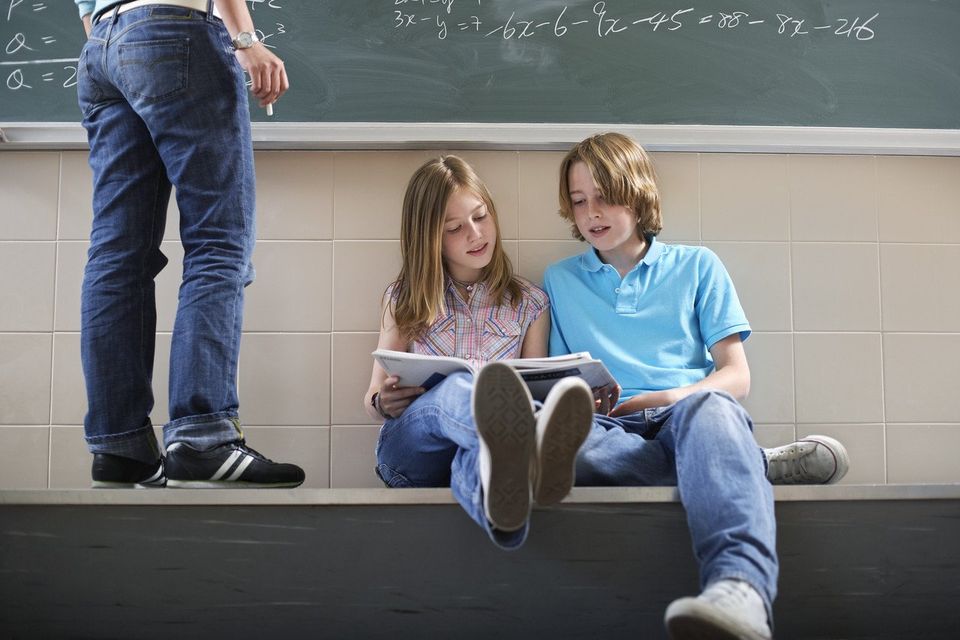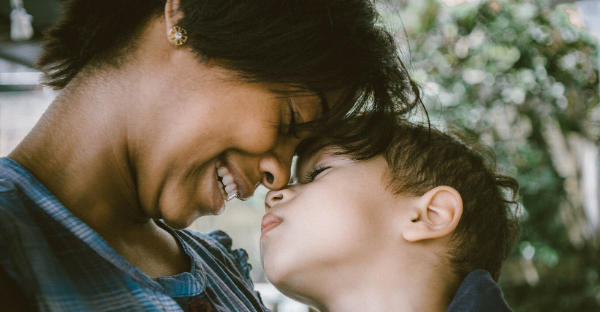Get in touch
555-555-5555
mymail@mailservice.com
Engage and Educate Your Children with Activities that Inspire Giving
June 1, 2020
Teaching children the power of helping and giving can help them feel empowered.

With schools closed around the country, millions of parents find themselves juggling full-time jobs with full-time parenting and… it’s not easy!
A great way to engage children in hours of worthy focused-time is to teach them about the spirit of giving and charity.
Why? Social science teaches us that giving to others and doing kind deeds increases social contact, self-esteem, self-worth, and character development in children. Giving and volunteering have also been proven to help counteract the effects of stress, anger, and anxiety. And, numerous scientific studies show that preforming acts of kindness result in significant health benefits, both physical and mental, for those who perform them. It’s even been shown to strengthen the immune system. Engaging children in positive activities also helps them to feel in control during a confusing and disorienting time.
So, with all these positive benefits in mind, a great way to use this time is to empower the children you love to embrace their ability to make a difference and help others.
Ellen Sabin, author of The Giving Book: Open the Door to a Lifetime of Giving, and an award winning series of children’s books from Watering Can Press that ‘grow kids with character’, shares some tips on teaching kids to give back.
1. Use Current Events: It’s very difficult to shield children from events covered by the media that have a negative impact on people and places in the world. No doubt your child knows about the coronavirus pandemic. You can use sad stories to make a positive impact by helping children understand the impact that caring individuals and organizations can make when challenges hit.
2. Let Them Decide: Kids love to feel like they are in charge. Since giving and charity are such personal endeavors, it’s the perfect time to let the child call the shots. Let children look around their own home, family, and community and think of ways they can help others. You can also have a great family conversation as you help them think about people they could support during this time.
3. Start Small: To a child, ending world hunger or finding a cure for a disease may seem abstract and beyond their impact. Start with causes closer to home. Here are some to get you thinking: - An elderly neighbor who needs help walking their dog; - Children or the elderly in an area hospital or nursing home who could use an uplifting card or artwork for their walls;
- A family member who could use cheering-up while self-isolating, so a daily call or video-chat would help them feel less lonely.
Other ideas: - Create custom made (art project) ‘thank you’ notes to send to healthcare workers and other front-line workers. - Encourage each child to think of some of their skills and talents, like reading, playing an instrument, etc.., and have them spend time ‘sharing and giving’ by teaching it to a sibling.
When kids feel the direct impact of their actions, it reinforces their ability to make a difference in the world around them.
4. Be a Good Role Model: Children are watching. If you’re encouraging them to help others and make positive contributions to the community, then you need to let them see you doing the same. Spend time talking with children about your philanthropic work and explain why these activities are so important to you.
5. Make it Fun: Hands on experiences are always more fun and effective than conversation alone. Look for opportunities that will bring giving to life for a child.
During this time, some ideas may include: - A family-walk, with trash bags in hand, to clean up litter. (Of course, with social distancing in mind.) - A scavenger hunt where your children (and you, if you have time) collect all the clothes and toys that you’ve outgrown. Clean then, box them, and get them ready to contribute (when it’s time) to the Salvation Army, Goodwill, the Red Cross, or another place that will send them to people who need them.
When self-isolation is behind us, you can throw a Giving Party! Check out the free “Parties with Purpose” guide that helps parents plan fun, themed parties that engage kids in giving and charity.
Please feel free to utilize our free teachers’ guides, with lesson plans aligned with our books, to support parents in homeschooling.
A great way to engage children in hours of worthy focused-time is to teach them about the spirit of giving and charity.
Why? Social science teaches us that giving to others and doing kind deeds increases social contact, self-esteem, self-worth, and character development in children. Giving and volunteering have also been proven to help counteract the effects of stress, anger, and anxiety. And, numerous scientific studies show that preforming acts of kindness result in significant health benefits, both physical and mental, for those who perform them. It’s even been shown to strengthen the immune system. Engaging children in positive activities also helps them to feel in control during a confusing and disorienting time.
So, with all these positive benefits in mind, a great way to use this time is to empower the children you love to embrace their ability to make a difference and help others.
Ellen Sabin, author of The Giving Book: Open the Door to a Lifetime of Giving, and an award winning series of children’s books from Watering Can Press that ‘grow kids with character’, shares some tips on teaching kids to give back.
1. Use Current Events: It’s very difficult to shield children from events covered by the media that have a negative impact on people and places in the world. No doubt your child knows about the coronavirus pandemic. You can use sad stories to make a positive impact by helping children understand the impact that caring individuals and organizations can make when challenges hit.
2. Let Them Decide: Kids love to feel like they are in charge. Since giving and charity are such personal endeavors, it’s the perfect time to let the child call the shots. Let children look around their own home, family, and community and think of ways they can help others. You can also have a great family conversation as you help them think about people they could support during this time.
3. Start Small: To a child, ending world hunger or finding a cure for a disease may seem abstract and beyond their impact. Start with causes closer to home. Here are some to get you thinking: - An elderly neighbor who needs help walking their dog; - Children or the elderly in an area hospital or nursing home who could use an uplifting card or artwork for their walls;
- A family member who could use cheering-up while self-isolating, so a daily call or video-chat would help them feel less lonely.
Other ideas: - Create custom made (art project) ‘thank you’ notes to send to healthcare workers and other front-line workers. - Encourage each child to think of some of their skills and talents, like reading, playing an instrument, etc.., and have them spend time ‘sharing and giving’ by teaching it to a sibling.
When kids feel the direct impact of their actions, it reinforces their ability to make a difference in the world around them.
4. Be a Good Role Model: Children are watching. If you’re encouraging them to help others and make positive contributions to the community, then you need to let them see you doing the same. Spend time talking with children about your philanthropic work and explain why these activities are so important to you.
5. Make it Fun: Hands on experiences are always more fun and effective than conversation alone. Look for opportunities that will bring giving to life for a child.
During this time, some ideas may include: - A family-walk, with trash bags in hand, to clean up litter. (Of course, with social distancing in mind.) - A scavenger hunt where your children (and you, if you have time) collect all the clothes and toys that you’ve outgrown. Clean then, box them, and get them ready to contribute (when it’s time) to the Salvation Army, Goodwill, the Red Cross, or another place that will send them to people who need them.
When self-isolation is behind us, you can throw a Giving Party! Check out the free “Parties with Purpose” guide that helps parents plan fun, themed parties that engage kids in giving and charity.
We hope you enjoy helping a child embrace the power their actions have to help others and improve the world around them.
More News From GBU

My husband served 30 years in the regular Army as an MP and in the Reserves with the DC National Guard where he was called to active duty 22 times in 1968 following the riots. He still remembers a law professor coming to the war protestors’ containment area demanding to, “Let my people go.” My husband counts his military service as an integral part of his life, so we yearly visit the Vietnam Wall, the World War II Memorial in DC, and the Carlisle Barracks in PA where his name is listed among the graduates of the U.S. Army War College. Thus, we know firsthand how important it is to make Veterans’ Day a year-long celebration of gratitude to all who have served. And he’d still be driving the same Jeep he used in 1968 or the 1953 Dodge M37 on display at Carlisle if only his fellow soldiers in uniform would be riding beside him as well.

Ingredients: (qt. 2) 8 oz. cream cheese (qt. 1) 20 oz. can of crushed pineapple A dash of salt ¼ cup of minced onion ½ cup of green pepper ½ cup of roasted, chopped pecans or walnuts 1 bag shredded cheese To make the cheese ball: First, thoroughly drain the crushed pineapple and squeeze dry. Next, dice the green pepper and place inside of a folded paper towel. Remember to set aside the stem of the pepper for later! Take a rolling pin and flatten the diced pepper, squeezing out as much water as possible. Then, combine all the ingredients except the cheese in a stand mixer and mix well. To create the pumpkin shape: Shape the cheese ball into a rough pumpkin shape. The less perfect, the better! Next, take a rubber spatula or a dull cheese knife and roll the edge into the side of the cheese ball, creating a crease. Continue this until you’ve made your way around the whole cheese ball. Then, using shredded cheese or cheeseball dust, coat the outside of the cheese ball. Touch up the creases of the pumpkin as needed. Finally, add your green pepper stem to the top!

National Beach Day is August 30, 2020, but with the current pandemic and travel restrictions it may feel impossible to celebrate with a day at the shore. Luckily, we’re here to help you create the best beach set up in your own backyard! We all know fall is right around the corner, but if you’re crossing your fingers for an extended summer season, this post is for you. A great perk to creating your backyard getaway so late in the season are the end-of-summer deals on furniture for your patio or deck. Transforming your outdoor space into an area that promotes relaxation will get you one step closer to feeling like you’re at the beach. Whether you’re living in a condo or the countryside, selecting the right furniture will create structure for your décor. If you’re leaning toward a modern style, select modular furniture with minimal lines and a neutral color palette. If your taste is more traditional, opt for wooden pieces that have curve and shape. This movement pairs well with warm colors and classic patterns like stripes or buffalo plaid. Incorporating these design elements will tailor your look and allow you to relax in a space all your own. If you’re stuck straddling the line between welcoming fall and clinging to summer, this post by Bless’er House will help you bridge the gap and transition with ease.

If you’re a GBU Financial Life (GBU) member or are considering a GBU life insurance or annuity policy, don’t forget to include your children as well. GBU offers numerous benefits, activities and programs to engage your child. You may ask yourself, why choose a member-owned insurance company like GBU for my family? Since its founding in 1892, GBU has helped to secure financial safety nets for members through stock market crashes, wars, pandemics and other challenging times, while continuing to provide value for its members. Today, the company hosts 65,000 members. GBU is an established organization with a financially strong foundation and a well-decorated history of helping members get back and give back, making it a clear choice for secure investment opportunities. The gift of a youth membership will set your child on a path to continued success and a bright future while helping secure solid, financial footing. When you purchase any GBU policy, membership is guaranteed for the term of the policy and your child is prepared for the next stage in life. Whether your child is heading off to college or a trade school, getting married or gearing up to buy a first home, GBU can set them on the right track to meet these milestones. Consider the following products: Coverdell Education Savings Account This option allows you to safely save cash gifts and earnings from early jobs. Parents and grandparents can contribute to this account as well. You can read more about this product HERE . Youth 3 Pay Life Membership Life Insurance This policy provides coverage for your child for life in three low, annual payments. You can read more about this product HERE . Youth 3 Pay Life Insurance This policy is similar to the Youth 3 Pay Life Membership, but instead provides higher face values and rider options. You can read more about this product HERE . In addition, when you purchase one of these products, your child becomes a GBU member with great benefits, too. Youth members qualify for key benefits like scholarship and grant programs, as well as the GBU Orphan Benefit program. In addition to a secure savings, the following benefits are available to your child as a youth member: Scholarships and Grants Scholarships and grants are available for high school students and those entering college, graduate school or trade school. Last year, GBU awarded more than $160,000 in scholarships and grants. In order to qualify for this benefit, your child must be a member themselves. Language Learning GBU will reimburse members for any language course for up to $250. This is a great way to help your child get an early start on high school and college language requirements. GBU Kid's Clubs GBU always invites children to attend community events with their parents, grandparents and friends, but youth members are offered discounted and often free tickets to events. There are also programs offered to youth members like Kinder Klub, Young Explorer and Community Heroes. Awards, Contests and Games GBU has numerous contests, games and awards for its young members. These contests are limited to members only. GBU Orphan Benefit If both member child’s parents pass away and at least one of the parents was a member for two months or longer, GBU will provide financial support through the rest of their childhood until the child either reaches the age of 19, marries, enters military service, or fails to maintain a GBU membership. By choosing to invest in a member-owned insurance company like GBU, you can support your child with financial security at an established organization, a selection of products aligned to your child’s needs and benefits that pave the way for their future success. Want to learn more? Contact us to find a GBU Agent near you!

Income for life . Annuities are the only investment vehicle that provide an income that can't be outlived. Financial security. GBU reserves one dollar for every dollar invested. This reserving method is beyond required insurance department reserving regulations and adds extra security to invested funds. Easy to manage. No renewal headaches or investment/reinvestment worries. Money when you need it. Earned interest can be withdrawn at any time, without GBU penalty. Competitive interest rates. Interest earnings are tax deferred until withdrawal. Keep more of your money. No loading, processing, sales or administrative fees. Earn money faster! 100% of deposited funds earn interest from the day they are received by GBU. #AllTheBenefits. An annuity policy with GBU gives you access to all of GBU's excellent member benefits. Watch your money grow. Easy-to-read statements that detail all deposits, withdrawals and earned interest are sent to you each quarter. Less worry. Guaranteed minimum interest rates provide account security.

What is An Annuity? A GBU annuity is a personal retirement vehicle designed to help individuals reach long-term financial goals by the use of tax-deductible, tax-exempt and tax-deferred accounts. In addition, GBU annuities can also be used to accumulate funds for first-time home buyers and higher education expenses. Retirement goals can be successfully achieved by combining annuity tax advantages with GBU’s competitive, daily-compounded interest rate. GBU annuities are available in both non-qualified and qualified formats. GBU’s annuity accounts do not have sales or administrative fees; 100% of your payments earn interest from the day they are received. Personal financial goals can be successfully achieved by combining tax advantages with GBU’s competitive, daily-compounded interest rates. Preferred 8 Annuity What is it? This retirement annuity account provides annuitants with the highest rate of interest GBU offers with tax-deferred accumulations. How Does it Work? GBU’s Preferred 8 Annuity is a tax-deferred retirement account that provides the highest GBU interest rate available. This account offers a one-year guaranteed rate in addition to a guaranteed minimum interest rate. A minimum initial deposit amount of $10,000 is required to open a GBU Preferred 8 Annuity. This account incorporates an 8-year early withdrawal restriction structure on amounts over the allowable principal withdrawals; Interest earned may be withdrawn at any time with no GBU penalty; After the first contract year, up to 10% of the principal amount may be withdrawn annually without being subject to GBU’s penalty schedule. Preferred 5 Annuity What is it? A tax-deferred retirement account paying a competitive interest rate. This contract provides a minimum guaranteed interest rate. Five-year withdrawal restrictions. How Does it Work? GBU’s Preferred 5 Annuity is a tax-deferred retirement account that pays a competitive rate of interest. This account offers a one-year guaranteed rate and a minimum interest rate guarantee. A minimum initial deposit amount of $500 is required to open a GBU Preferred 5 Annuity. This account incorporates a 5-year early withdrawal restriction structure on amounts over the allowable principal withdrawals. Interest earned may be withdrawn at any time with no GBU penalty. After the first contract year, up to 10% of the principal amount may be withdrawn annually without being subject to GBU’s penalty schedule. Immediate Annuity What is it? A single premium contract that pays a periodic distribution for a specified period or for the annuitant’s lifetime with a “locked-in” rate of interest. How Does it Work? GBU’s Immediate Annuity is a single premium annuity contract that pays a guaranteed periodic distribution for a specified period or for the annuitant’s lifetime. A minimum initial deposit amount of $25,000 is required to open a GBU Immediate Annuity. Various settlement options are available including: Period Certain, Period Certain & Life, Joint & Survivor; Lifetime – No Refund; Lifetime – With Refund.

Happy Flag Day, GBU! This historic holiday marks the Second Continental Congress’ adoption of the first U.S. national flag on June 14, 1777. The first flag, thanks to Betsy Ross’ sewing prowess, featured the same 13 red and white stripes we see today. In order to celebrate this special occasion, what better way than to make a flag dessert and craft! Brownie Flag Recipe This Brownie Flag Recipe from Spicy Southern Kitchen is sure to be a hit for whoever has the chance to try it. It is super easy to make and looks amazing! All you need is: 1 or 2 packages of brownie mix 1 cup fresh blueberries 2 cups sliced strawberries 2 containers of frosting



